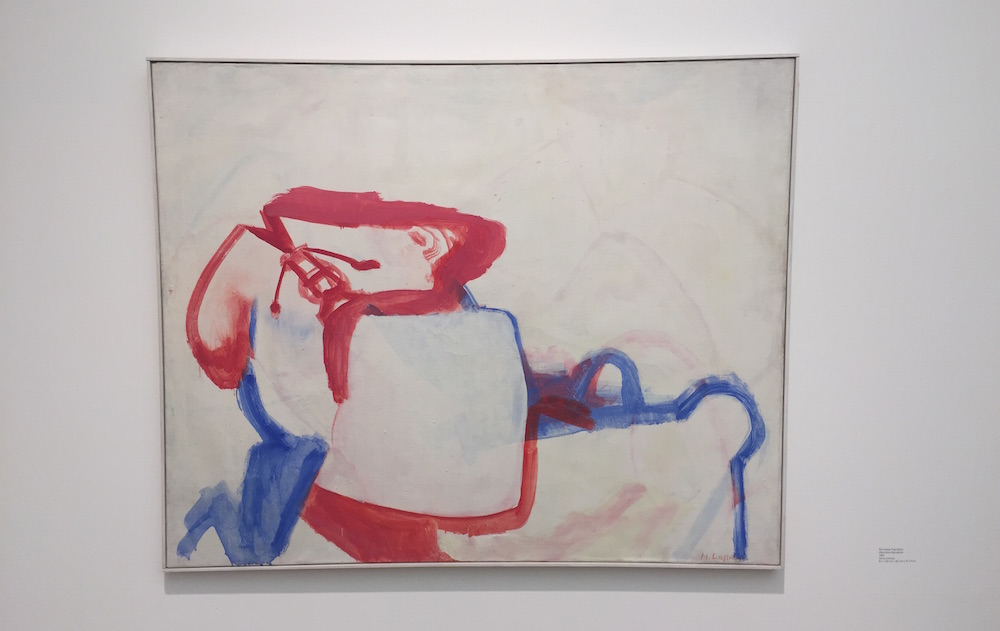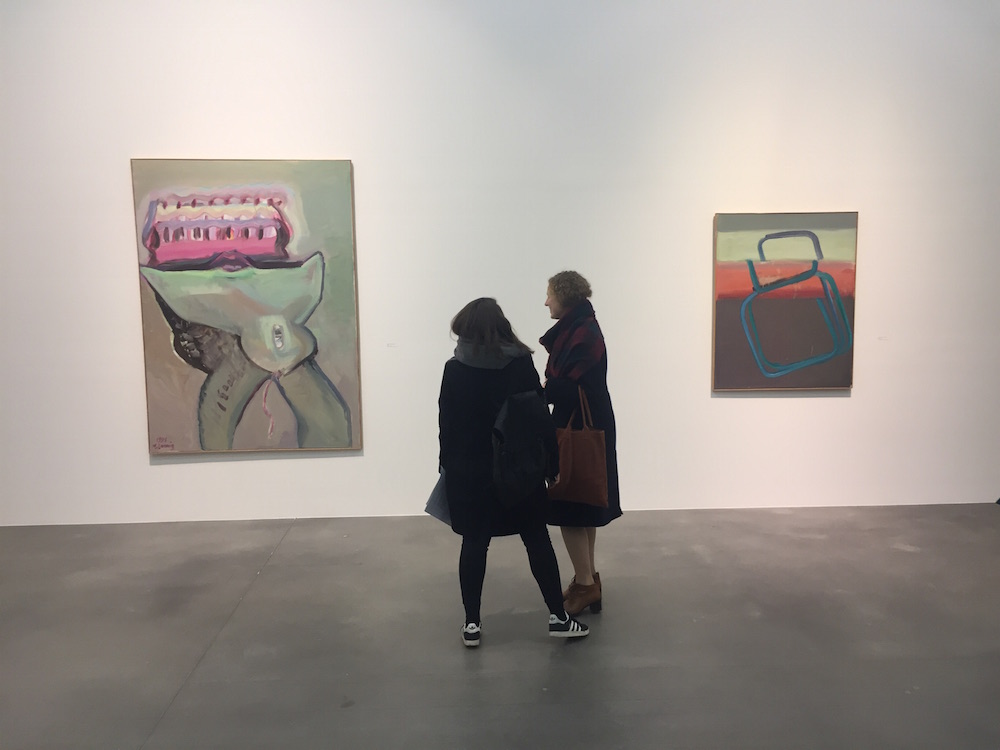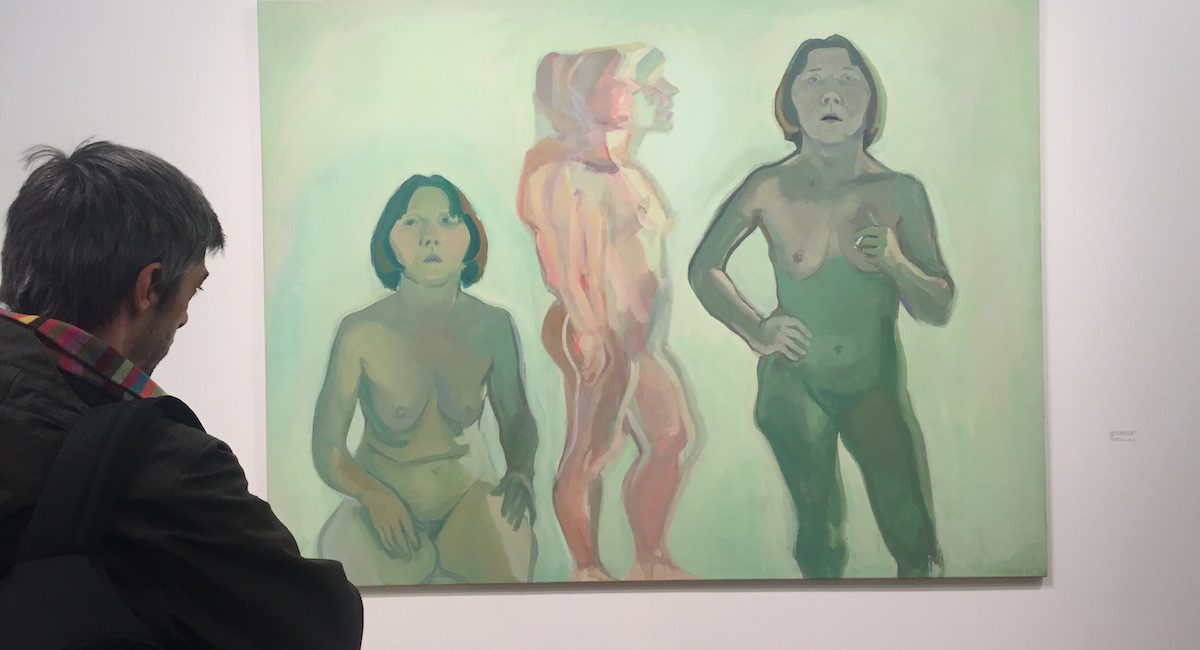There is no doubt that Maria Lassnig can paint. Whatever style from her early abstracts through to her figuration she handles paint fluently, her palette choices are selected with ease and confidence and show a debt to her Austrian heritage with more than a nod to Egon Schiele’s expressionist compositions and Oskar Kokoschka’s vivid colours and the European avant-garde. Her gestural brushstrokes are spontaneous, informal and expressive.
her palette choices are selected with ease and confidence and show a debt to her Austrian heritage

The superb show at Hauser & Wirth London across both gallery spaces covers over 50 years of Lassnig’s output. Each painting has been carefully selected and displayed in chronological order to highlight her evolution from early experiments with abstraction to her inventive figuration and the refinement of her ’body awareness’ paintings in which she captured physical sensations as felt from within. Each painting is given space to breathe allowing maximum impact to the viewer. Lassnig’s self-portraits are familiar having been fortunate to see last year’s exhibition at Tate Liverpool (2016), in which her reflective Baconian paintings address the ageing process, the passing of time and the fragility of the human body from a feminist perspective. Lassnig declared that ‘truth resides in the emotions produced within the physical shell’ and spent much of her career recording her physiological states. Her early abstractions were a surprise, however, and her early ventures into a personal figuration predict a Philip Guston pink palette some years ahead of Guston. It is easy to see why Paul McCarthy and Martin Kippenbanger cite her as an influence.

Maria Lassnig (1919-2014) was born in Carinthia in southern Austria. She studied at Vienna’s Academy of Fine Arts in the midst of the Second World War starting in 1940 and graduating in 1945. Her training was very much in the manner of the approved academic realism but post-war she quickly moved away from this and found inspiration in Austria’s avant-garde past particularly from Schiele and Kokoschka. In the 1960s she moved between Vienna and Paris developing her painting practice, moving to New York in 1968. In 1980 she returned to Austria and that year represented her birth country at the 39th Venice Biennale.

It was only in the last fifteen years of Lassnig’s life that she began to receive the acclaim that she deserved. In 2013 she was awarded the Golden Lion for Lifetime Achievement and her first major US show wasn’t until 2014 taking place at MoMA PS1, Long Island City NY despite numerous well-attended international solo exhibitions at the Stedelijk Museum, Amsterdam (1994), Centrre Geroges Pompidou, Paris (1995), Serpentine Gallery, London (2008). Looking at such a confident, powerful oeuvre throughout her career it is hard to fathom why it took so long for her to be noticed.
Words: Sara Faith Photos: PC Robinson 2017
Maria Lassnig: A Painting Survey, 1950-2007 Hauser and Wirth London 1 March – 29 April 2017 FREE

